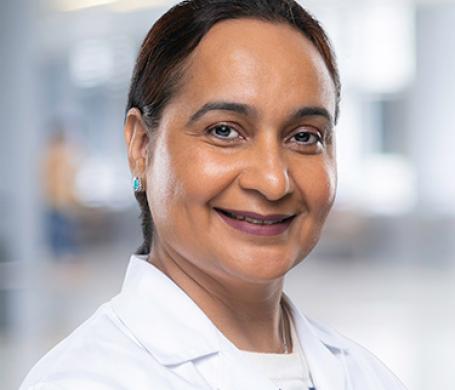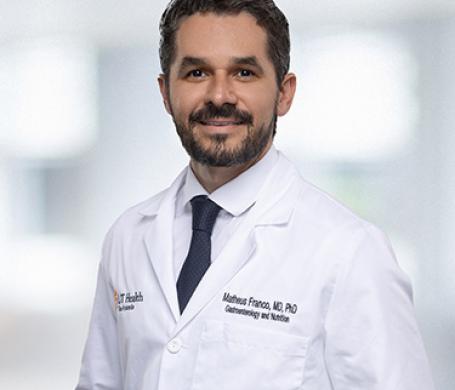

Advanced Interventional Gastroenterology Program
- About Us
-
Cancer Care
- Diagnosing Cancer
-
Our Cancer Programs
- Adolescent and Young Adult Cancer Program
- Blood Cancer & Hematological Malignancy Program
- Blood Disorder (Hematology) Program
- Breast Cancer Program
- Cancer Risk Reduction and Education Clinic
- Cardio-Oncology Program
- Cancer Genetics Program
- Childhood Cancer Survivorship Program
- Endocrine Tumor Program
- Eye Cancer Program
- Gastrointestinal (GI) Cancer Program
- Genitourinary Cancer Program
- Gynecologic Oncology Program
- Head and Neck Cancer Program
- Liver Tumor and Cancer Program
- Lung Cancer Program
- Neuro-Oncology (Brain Tumor) Program
- Neurofibromatosis Program
- Pediatric Neuro-Oncology Program
- Pediatric Oncology Program
- Pediatric Sarcoma Program
- Pediatric Thrombosis Program
- Radiation Oncology
- Sarcoma Cancer Program
- Skin Cancer Program
- Cancer Survivorship Program
-
Cancer Prevention and Screenings
- Cervical Cancer Screening Guidelines
- Colorectal Cancer Screening
- Endometrial (Uterine) Cancer Screening Guidelines
- Hepatitis and Cancer
- HPV Vaccine and Screenings
- Liver Cancer Guidelines
- Lung Cancer Screening
- Mammogram
- Ovarian Cancer Screening Guidelines
- Prostate Cancer Screening Guidelines
- Skin Cancer Screenings
- Sun and Skin Safety
- Tobacco Use and Cancer
- Cancer Treatments
- Cancer Types
- Clinical Trials and Research
- Donate and Volunteer
- Education
- Patients and Families
- Appointments
- Doctors and Locations
- Avanzando Caminos (Leading Pathways) Study
- Community Outreach and Engagement Program
- Estudio Avanzando Caminos (Leading Pathways)
The AIG team offers precise care and innovative endoscopic methods, eliminating the need for open surgery. Endoscopy uses a long, thin tube (endoscope) with a camera on the end. This helps doctors perform procedures with fewer, smaller incisions – sometimes none at all. That means a lower risk of complications, a shorter hospital stay and reduced recovery time – getting you back to your regular activities sooner.
Conditions we treat
Interventional gastroenterology is used for many conditions, including:
- Barrett’s esophagus
- Benign and early malignant polyps or lesions in the GI tract
- Bile duct stones and strictures
- Biliary disorders
- Chronic GI bleeding
- Colorectal cancer (or colon cancer)
- Esophageal cancer and esophageal varices
- Gastroparesis
- Obesity (endoscopic weight-loss treatment)
- Pancreatic cancer and other pancreatic disorders
- Swallowing disorders
- Young-onset colorectal cancer
Why choose us for interventional gastroenterology?
- The latest minimally invasive techniques: We offer leading techniques such as endoscopic bariatric procedures, endoscopic myotomies and endoscopic submucosal dissection. You can trust that you will have access to innovative endoscopic treatment.
- Comprehensive, collaborative care: Your team of advanced endoscopy-trained clinicians practices within Mays Cancer Center alongside the gastrointestinal (GI) cancer team. This allows them to work closely with surgical oncologists, medical oncologists, hepatobiliary surgeons and radiation oncologists on your care.
Procedures offered
We offer a full range of minimally invasive endoscopic procedures, including:
- Bariatric (weight loss) endoscopy: These procedures use an endoscope to assist with weight loss non-surgically.
- Endoscopic sleeve gastroplasty (ESG): ESG is a minimally invasive procedure for weight loss that decreases the stomach’s size and capacity by 70%. It helps you feel full longer.
- Transoral outlet reduction (TORe): TORe is used for patients who previously had gastric bypass surgery and are regaining weight. This happens when the space between the gastric pouch and the small intestine expands.
- Endoscopic liver procedures:
- Endoscopic ultrasound-guided liver biopsy (EUS-LB): EUS-LB is a minimally invasive way to biopsy (take a sample of) the liver. It is less painful, has a lower risk of complications and has a quicker recovery time.
- EUS-guided portal pressure gradient measurement (EUS-PPG): EUS-PPG is a relatively new way to diagnose portal hypertension, a serious complication of liver disease.
- Variceal treatment: Variceal treatment is used for enlarged blood vessels around the esophagus (esophageal varices), a complication of liver disease, to stop or prevent them from bleeding or rupturing. There are multiple methods of variceal treatment including endoscopic sclerotherapy (ES), endoscopic variceal banding (EVL) and treatment under endoscopic ultrasound (EUS) guidance.
- Endoscopic retrograde cholangiopancreatography (ERCP): Your doctor uses an endoscope and X-ray to diagnose and treat bile ducts, gallbladder, liver and pancreas conditions. They route the endoscope through the throat and esophagus to the stomach and small intestine. This enables them to look for blockages, fluid leaks, infection or tumors.
- Endoscopic ultrasound-guided fine needle aspiration (EUS-FNA) and biopsy: The doctor takes a tissue or fluid sample from the GI tract to test for bile duct, esophageal, gastric, pancreatic or rectal cancers. The doctor passes an endoscope through the esophagus along with an ultrasound wand. The ultrasound produces images that enable the doctor to see the precise location to biopsy.
- EUS-guided bile duct (biliary) drainage (EUS-BD): EUS-BD is a typical treatment for a bile duct blockage following ERCP. The doctor uses an endoscope with an ultrasound wand to find the blocked duct during the procedure. They then clear it and place a miniature mesh tube (stent) to allow bile to flow.
- EUS-guided celiac plexus neurolysis and block: The doctor uses endoscopic ultrasound to inject pain medication into nerves in the abdomen (or the celiac plexus). These nerves connect the gallbladder, intestines, liver, pancreas and stomach to the nervous system. This procedure is for people with pancreatic cancer or chronic pancreatitis.
- EUS-guided gallbladder drainage: The doctor connects the gallbladder to the digestive tract using endoscopic ultrasound. They place a small mesh tube (stent) that enables the gallbladder to drain.
- EUS-guided gastric bypass (gastrojejunostomy): The doctor uses an endoscope and ultrasound to connect the stomach directly to the middle section of the small intestine. The stomach would usually connect to the upper small intestine (duodenum). A stent bypasses the cancer in the duodenum that kept food from entering the small intestine.
- EUS-guided radiofrequency ablation (EUS-RFA): This procedure uses high-frequency radio waves to wipe out cancer cells. Doctors use it for multiple types of pancreatic tumors that are difficult to remove with surgery.
- Endoscopic submucosal dissection (ESD): ESD removes cancerous and precancerous sections beneath the lining of the gastrointestinal tract. They can be challenging for doctors to remove because they are near muscles.
- Gastric peroral endoscopic myotomy (G-POEM): The G-POEM procedure cuts the muscle surrounding the valve between the small intestine and stomach (the pyloric sphincter). It is a typical treatment for gastroparesis.
- Peroral endoscopic myotomy (POEM): During this procedure, the doctor uses an endoscope to cut the esophagus muscles to treat a rare swallowing disorder called achalasia.
- Transoral incisionless fundoplication (TIF): During a TIF procedure, the doctor passes an endoscope with a camera through the mouth to the esophagus. The doctor then folds the top portion of the stomach around the esophagus. TIF treats chronic acid reflux (GERD) and hiatal hernia.
Leading cancer care in San Antonio
We partner with MD Anderson Cancer Center to provide enhanced treatment options convenient to San Antonio and 38 counties in South Texas. Mays Cancer Center doctors partner with MD Anderson’s team whenever an added perspective could improve your care, such as for some rare cancers or complex cases.
Get more information about our partnership with MD Anderson.
Our team approach to gastrointestinal conditions
Here, advanced gastroenterologists and endoscopists with different areas of expertise coordinate closely with cancer doctors to provide expert care. This level of coordination benefits you throughout every phase of your care.
Our endoscopy, hepatobiliary and cancer team includes:
- Advanced endoscopy-trained doctors
- Hepatobiliary surgeons treat both cancerous and non-cancerous (benign) conditions of the bile ducts, gallbladder, liver and pancreas.
- Medical oncologists administer medications such as chemotherapy, targeted therapy or immunotherapy based on your individual circumstances.
- Radiation oncologists use advanced techniques and leading technologies to eliminate cancer cells with radiation.
- Surgeons perform surgical procedures using techniques that are among the latest in the field. Our team includes surgeons specializing in GI and liver cancer procedures.
Care location
Zeller Building
- Advanced Interventional Gastroenterology Program | 6th Floor
Get advanced gastrointestinal care
Take the first step by calling 210-450-9880 to schedule an appointment for testing, a second opinion or to learn about treatment options.

 Close
Close







